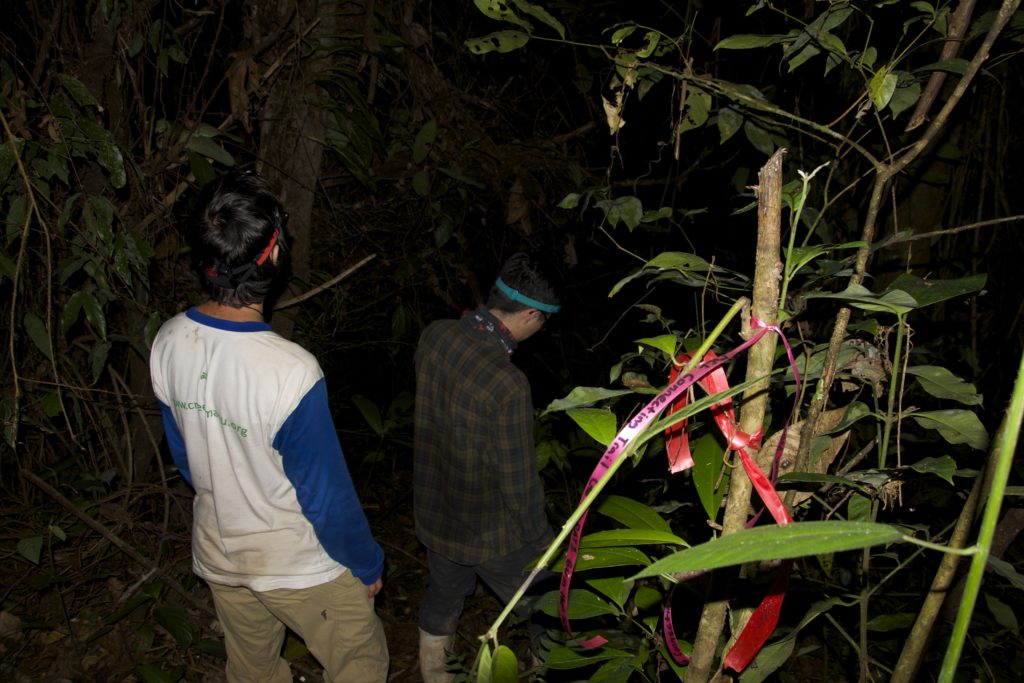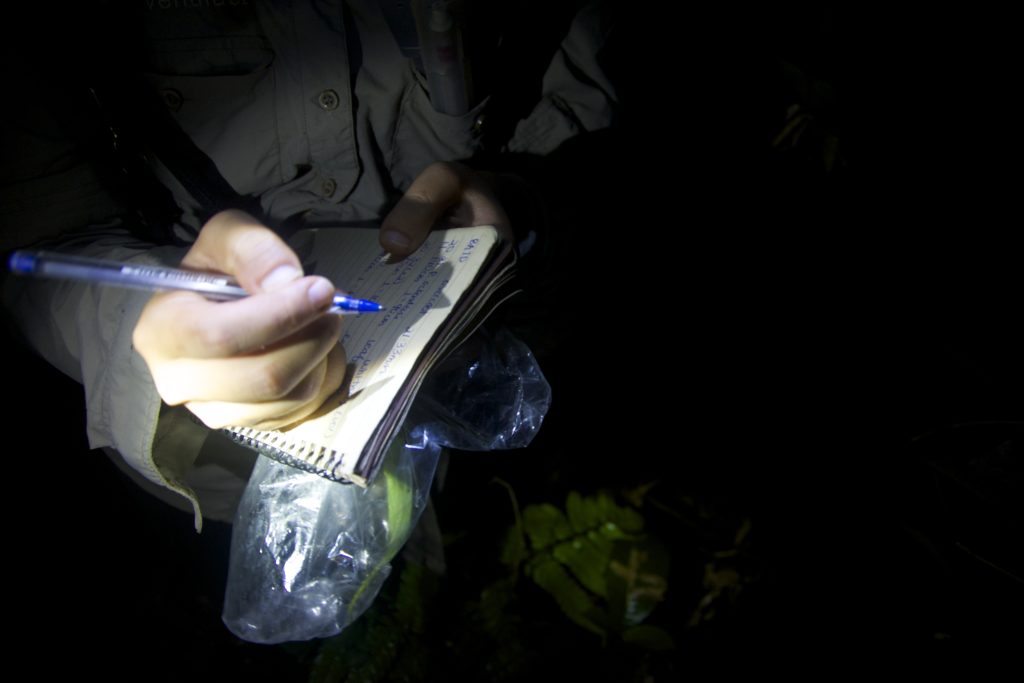Let Multimedia Intern, Grace Cavanagh take you on a journey through one of the most exciting jungle experiences you’ll have at the Manu Learning Centre: a night survey in the middle of the rainforest.
So, you’re on your way to the Amazon, but you’re not sure what to expect? Well, let me fill you in on one of the long-term surveys running at the Manu Learning Centre (MLC) which you will likely take part in: a Visual Encounter Survey (VES). This night survey involves walking two to three 100m routes off the main trail, called transects, to collect data and monitor amphibians and reptiles. Described as “exhilarating” by conservation intern, Sam, participating in a research survey in the rainforest at night is just one of the many once in a lifetime experiences you’ll have during your time at the MLC.

On the evening of the VES, you leave camp and head into the rainforest,; wondering what secrets the jungle will reveal to you that night. As darkness falls and a head torch becomes your only light source you realise, as Sam explains, that night in the rainforest is a “whole new experience”.
After walking for almost an hour you reach the first transect and set off following the familiar red tape lining the trees, inviting you eerily into the inner veins of the forest. You walk slowly and silently in single file, listening to the roar of the nearby river, searching the leaves, eager for a peek of a rainforest resident. Channeling your inner gymnast, you clamber over fallen branches and duck under low suspended trees with masses of buzzing and biting insects for company. Narrowly missing a gigantic Brazilian wandering spider which has made its shimmering web in the middle of the transect, you realise the jungle is constantly trying to prohibit you from discovering its mysteries.

Spotting glinting eyes and hearing the crack of a breaking twig, your imagination tells you there could be a lurking jaguar. Suddenly, an excited, hushed voice breaks the noise of the jungle.
“I’ve found a salamander!”
Everyone crowds round hoping for a glimpse, however, it reveals itself to be a dead leaf in the frustrating shape of a salamander.

Walking on, another voice rings out “I’ve got something!”. You rush to follow the sounds of excitement and meet your first frog of the night. Everyone is gathered ‘ooh’ing and ‘aah’ing around the incredible organism cheerfully sat on a leaf, brightly lit by three head torches. Noting down the details and collecting the creature identified as a pristimantis reichlei, you continue through the isolated route.
As 30 minutes go by you reach 100m: the end of the transect. Recording the weight and length of your treasure is made difficult by the fidgeting frog and even more problematic by a particularly large group of moths swarming around.

Relying on the red tape to guide you back to the safety of the trail you release the frog where it was found. Trying to find your way, after a wrong turn or three, you finally make it back where you started to check the temperature and humidity gauge, which a large spider has now claimed as its own.
As you make your way to the next transect to repeat this process, you keep your eyes peeled for any exciting animals. Constantly alert, you never know what could be found in the Amazon. As Sam says,
“There’s always the possibility of finding something new”.
After three transects, four frogs and one lizard found, we head back to camp and add to the 8 years of data Crees have been collecting on this area within the Manu Biosphere Reserve. At 11:30pm, later than the usual 8:30pm jungle bedtime we drift into a satisfied sleep lulled by the sounds of the rainforest.

